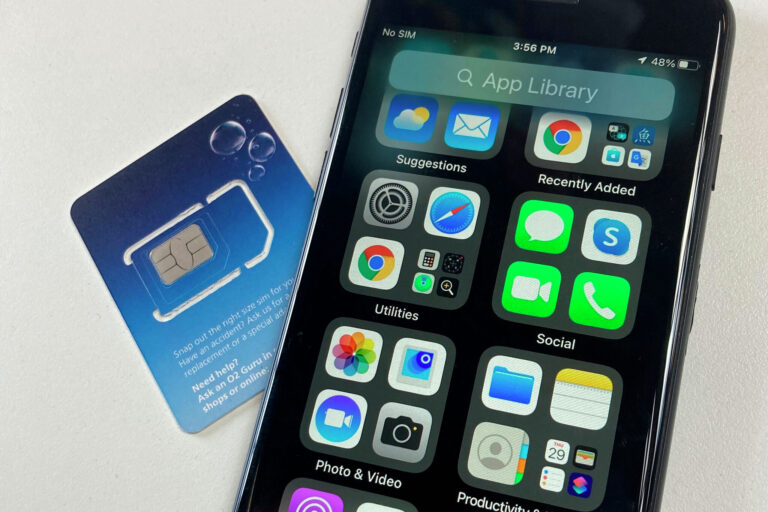For most people, a smartphone is a necessity when traveling abroad in the summer. What would you do without your smartphone to find your Airbnb on Google Maps, post videos to Instagram from the Eiffel Tower, or WhatsApp your friends and family back home?
Of course, if you’re using data-hungry apps while traveling abroad, you always run the risk of incurring expensive roaming charges from your mobile operator. The solution? An international travel eSIM for your smartphone.
How would you use this technology? Here are some tips:
Article continues below this ad
What is an eSIM?
If you’ve ever bought a new cell phone, you’re probably familiar with SIM cards. SIM stands for Subscriber Identity Module, and it’s a tiny chip about the size of a fingernail that fits into a slot in most cell phones. It contains your account information and phone number, and without it you can’t get cell phone service.
However, physical SIM cards are slowly being replaced by eSIMs, which are built into new phones. These digital versions serve the same function and make life easier, but for those used to physical SIMs, they may be confusing at first.
Why use an eSIM?
Having a SIM card tray makes it easier to switch carriers. If you recently bought a new smartphone, you might not have a choice: Apple has discontinued the SIM card tray starting with the iPhone 14, released in September 2022.
Article continues below this ad
These are especially useful for travelers: if you have a compatible phone, you can add an eSIM from a virtual carrier that offers better data roaming rates than your home network. Many phones let you add multiple eSIMs so you can easily switch between them, and some phones even let you use two at the same time.
Think about convenience: Gone are the days of arriving in a strange country after a long flight, finding the local telco’s airport kiosk, carefully opening the SIM tray with a pin and swapping in a new chip, careful not to lose the existing one.
Where can I get it?
The eSIM market is growing rapidly, with dozens of providers that can be found online, including Nomad, Holafly, Easysim, Airhub and Airalo, says Kester Mann, director of consumer research at CCS Insight.
Article continues below this ad
“I think they offer a very affordable and attractive opportunity for international travelers so they have a role to play,” Mann said.
The boom means there’s lots of competition and prices are staying low, and prices are usually clearly displayed online via a package menu on the provider’s website, or a calculation based on the amount of data you need and the length of your trip.
According to CCS, around 800 carriers support eSIM, so international coverage is widespread. Many eSIM providers offer packages based on country or region, so you can shop around and sign up in advance for affordable providers where you’re visiting. If you’re traveling to Europe and want a month’s worth of data covering 30 countries, for example, Airalo offers 10 gigabytes for $37, while Holafly’s package offers unlimited data for 69 euros ($75).
I’ll be traveling to Prague soon, so I purchased 5GB of data from Global Yo for just $5. I was a little disappointed because there were some negative reviews saying that they had issues purchasing, installing, and activating their eSIM, but I had no issues.
Article continues below this ad
How is it added?
You need an unlocked phone to use it with different wireless carriers.
If you haven’t set up a new phone, the common activation method is a QR code, or more commonly a string of numbers and letters. If you’re planning on traveling and buying a phone before you leave, it’s a good idea to print out the code if you don’t want to activate it right away.
For iPhone, go to the Settings menu, navigate to the Cellular or Mobile Services section, and tap Add eSIM. You’ll be asked to scan the code or enter it manually. For Android users, the process is similar. Samsung has a guide for its Galaxy devices, Google has a help page for Pixel users, and eSIM carriers have step-by-step instructions. Apple has a YouTube video and a collection of tips on how to use an eSIM when traveling internationally, and how to use two eSIMs at the same time.
Article continues below this ad
Mann said that if you have a phone that supports dual eSIM, “you could potentially choose the best network based on price or coverage” while traveling.
Some carriers offer their own apps for managing your eSIM and tracking your data usage.
How do I know?
According to CCS Insight, there are more than 200 devices that support the technology. UK telco Vodafone publishes a list of compatible devices, or you can dial *#06# to find out if your device is compatible by its EID code.
Article continues below this ad
For iPhone users, it covers all models released after XS, XS Max, XR, and recent iPads. It’s compatible with all Samsung Galaxy devices released after 2020, and also works with Google Pixel 4 and newer models. It also supports some Pixel 3 devices.
Does it always make sense to use an eSIM for travel? First, check the roaming rates of the carriers in the places you’re visiting. It might not be worth it.
“These days roaming charges are much lower than they used to be, so they’re not exorbitant,” Mann said. Roaming charges have been abolished when crossing borders within the 27-nation EU. But travelers from Britain, which has since left the EU, must pay roaming charges again when traveling to continental Europe.




